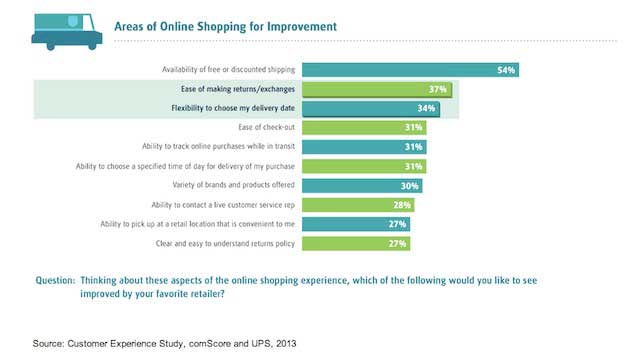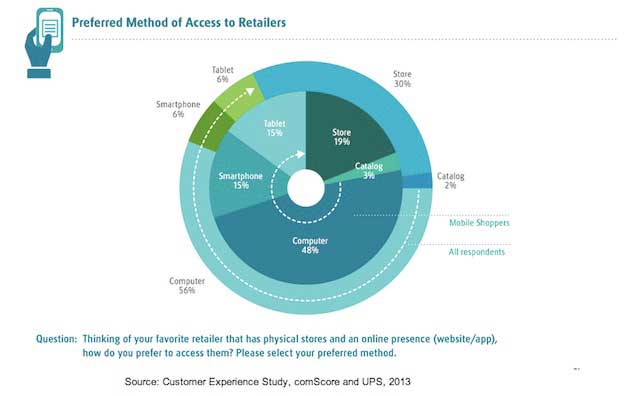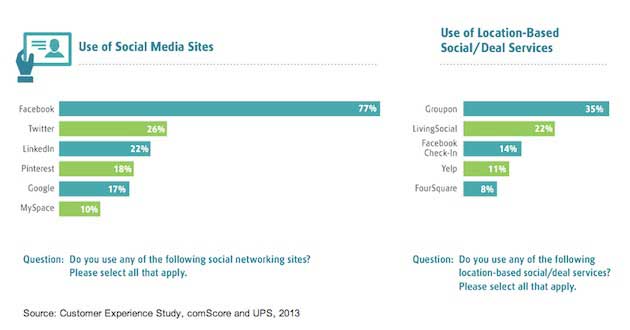More than 8 in 10 people (83%) are satisfied overall with their online shopping experiences, according to a recent report examining consumers' e-commerce preferences by comScore and UPS.
However, satisfaction drops below 50% when shoppers are asked about flexibility to choose delivery dates, ability to choose a specified time of day for delivery of purchases, and flexibility to re-route packages.
Below, additional key findings from the report, UPS Pulse of the Online Shopper: A Customer Experience Study, which examined the integrated buying experiences of 3,000 US consumers shopping in physical stores and online.
Omnichannel Options
Online shoppers surveyed are looking for a variety of flexible options from retailers: 62% want to buy items online and make returns in-store, and 44% want the ability to buy online and pick up their purchases in a store.
Opportunities for Improvement
Online shoppers want to see the most improvement in the checkout, delivery, and post-purchase phases.
Though free or discounted shipping is highly valued by consumers, easy returns and exchanges and the flexibility to choose delivery dates also play a key role.
The Mobile Movement
Mobile is quickly becoming the preferred e-commerce channel as 7 out of 10 online consumers examined access multichannel retailers through a digital channel.
Half of online shoppers surveyed who own a smartphone and nearly 60% who own a tablet make purchases on those tablets.
Consumers are also open to communications from retailers on their mobile devices: 47% want a coupon/promotion sent to them because a retailer knows they are in-store or nearby.
Social Channel Engagement
Not surprisingly, 84% of online shoppers use at least one social media site. Among Facebook users—the most popular channel—60% "like" a brand to receive an incentive or promotion.
About the research: comScore conducted the 2013 UPS Pulse of the Online Shopper study in February 2013. More than 3,000 US consumers provided data about their online shopping habits. All shoppers surveyed made at least two online purchases in a typical three-month period.








